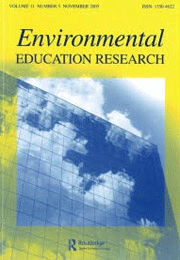Universities are facing increasing pressures to change the educational programmes they offer in order to make graduates fit for future citizenship and employment in the 21st Century. The impetus for radical re-purposing of universities comes from a complex array of contemporary issues, including societal, economic and environmental challenges as well as national and international policy change. Curriculum reform and innovation are beginning to take place in many universities in the UK and elsewhere in the world in response to such pressures and policy developments.
This book’s 31 chapters focus on some of the current research approaches that underpin how universities go about transforming their teaching, learning in the context of Higher Education for Sustainable Development (HESD). Without doubt, researching HESD is an ambitious task and not without its conceptual and temporal limitations, given that HESD has many distinctive definitions, advocates who frame it in different ways, and critics. Disappointingly, the editors failed to cover this issue in their introduction, offering neither definition nor explanation of HESD and its importance as an emerging context for research, nor any clear objectives for this Handbook. It is not clear why the title “handbook” was chosen, since this is not “a manual of instruction or guidance” in HESD.
The editors advocate three different audiences for this book: early-career researchers, already conversant as post-graduates in the field of HESD; early- and mid-career researchers from a wide range of disciplinary traditions who wish to specialise in HESD research; and an unspecified category of academics who specialise in HESD research, as part of their sustainability-related research in teaching and learning scholarship.
Whilst there are many valuable and well-written chapters in this book, the introduction fails in any real sense to initiate and engage the reader in what research in HESD looks like - either conceptually or in practice - other than to say it has “distinctive topics and research approaches”. It is only when you read the lucid and well-crafted chapter by Stephen Sterling et al. from Plymouth University, that this begins to crystallise in any tangible and thoughtful way - and this is chapter 6 of the book!
The editors have structured the book in four parts:
Part 1 - Education for sustainable development in higher education.
Part 2 - Paradigms and methodologies of research on higher education for sustainable development.
Part 3 - Issues and themes on higher education for sustainable development.
Part 4 - Examples of research on higher education for sustainable development.
There is considerable overlap between these sections and, whilst the editors and authors have usefully referenced back or forward where there is similar discussion or overlap, it is not consistently sign-posted or cross-referenced.
One of the most significant issues with the concept of research in HESD is that it is rarely set in the wider context of a whole institutional reform and change process as exemplified by the (University of) Melbourne Model and other examples such as the University of Arizona, University of British Columbia and Aberdeen University in Scotland.
 The Higher Education Academy in the UK has initiated an ambitious but relatively small scale institutional change programme involving some 20 universities called the ‘Green Academy - A Curriculum for Tomorrow’, which aims to promote new approaches to the curriculum. It is fundamentally aimed at achieving what are described as “Graduate Attributes for the 21st Century” after a radical curriculum restructuring programme carried out by the University of Melbourne, which became known as the Melbourne Model. Harvard, Hong Kong and Yale have undergone similar reforms along with a small number of universities in the UK, including Aberdeen, Manchester, Keele and Southampton.
The Higher Education Academy in the UK has initiated an ambitious but relatively small scale institutional change programme involving some 20 universities called the ‘Green Academy - A Curriculum for Tomorrow’, which aims to promote new approaches to the curriculum. It is fundamentally aimed at achieving what are described as “Graduate Attributes for the 21st Century” after a radical curriculum restructuring programme carried out by the University of Melbourne, which became known as the Melbourne Model. Harvard, Hong Kong and Yale have undergone similar reforms along with a small number of universities in the UK, including Aberdeen, Manchester, Keele and Southampton.
The Melbourne Model is based on five well defined graduate attributes, two of which directly focus on international learning experiences. Graduates of the University are expected to have an understanding of and respect for social and cultural diversity. They are expected to accept social and civic responsibilities and be advocates for improving the sustainability of their environment, and have a broad global understanding coupled with a high regard for human rights, equity and ethics. Interdisciplinarity is emphasised especially where complex issues require more than one discipline to resolve them. However, there is little mention of these whole institutional reform programmes in this book. This is a major omission given the international scope of its coverage. Such initiatives are still relatively new and as yet mostly under researched and evaluated; some grounded critical appraisal of their progress is much needed to enlighten those higher education academics who seek to promote and develop new horizons for their universities.
Notwithstanding these missed opportunities, there are many chapters which exemplify some of the best commentary on the current state of research in HESD across the globe. Readers might find the following chapters useful in setting out clearly and cogently some of the key issues universities face.
Chapter 2, written by Arjen Wals and colleagues at Wageningen University, emphasises the need to have in place a widely-shared commitment for curriculum change facilitated by sensitive and informed leadership and management. Stephen Sterling and colleagues’ chapter 6 questions whether is there room for objectivity in the politically motivated realm of ESD. According to these authors it can only be achieved through a participatory research paradigm - where ESD is conceived as a “cultural product” of the institution working collaboratively through participative inquiry and practice.
Chapter 18 on student engagement sets out some of the real successes of the engagement of the National Union of Students in the UK. The National Union of Students (NUS) is a confederation of around 600 institution-based students' unions in the UK, with devolved sub-groups in Northern Ireland, Scotland and Wales. Its remit is to provide a national voice for students in UK universities and colleges, and to help students’ unions within institutions to work effectively in order to improve the experience of all students.
Perhaps the chapter which has the most to offer those who are grappling with curriculum and pedagogical reform is chapter 16. Written by Arnim Wiek and colleagues at Arizona State University, it seeks to define and operationalise the competencies for sustainable development. This is a well-structured and forensic analysis of the kinds of abilities and capabilities of graduates and the professionals they may become, and which they will need to meet the complex requirements of society and its institutions if we are to become less reliant on unsustainable processes and practice.
The most challenging chapter may be chapter 17, by Kerry Shephard, based at the University of Otago in New Zealand. Here he explores educational outcomes achieved by students in the context of education for sustainable development. He clearly differentiates between teaching and learning for awareness or knowledge of sustainability and that aimed at changing skills, attitudes and values. The chapter offers some interesting insights into how change happens in individuals and cohorts of students.
Overall, it is difficult to do justice to this wide ranging international compendium of research in HESD. The scale and complexity of the research theme is daunting, particularly if, as one author claims, there are now 150 million students currently enrolled in HE internationally - an increase of 50% over the past decade. Furthermore, most universities over this period have expanded their campuses and building programmes to such an extent that their collective carbon footprint will be significantly higher and hence more damaging to the planetary boundaries that define the sustainability of the planet. Whilst change in many universities is happening, the scale and pace remain fundamental issues.
Routledge Handbook of Sustainable Development in Higher Education
Matthias Barth, Gerd Michelsen, Marco Rieckmann, Ian Thomas (editors) | ISBN: 978-0415-727303 | Published: December 2016 | Publisher: Taylor & Francis Online





